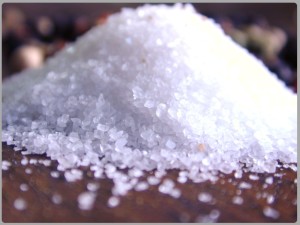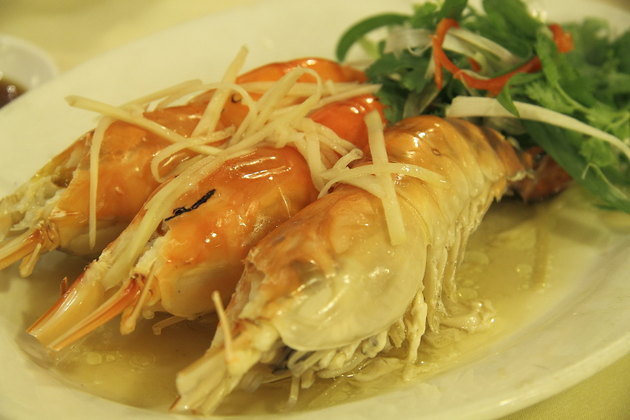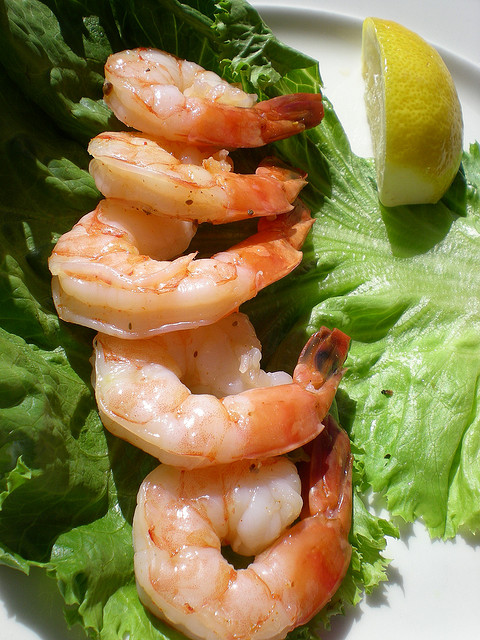The Salty Taste: 5 Ways to Avoid Inflammation
 The energy science categorizes food according to taste(rasa which has an effect on the energy patterns of VPK), virya(effect that food has on our small intestine and tissues), vipak(effect that food has on our colon and cells), and prabhav(effect that it has on the DNA of our cells) This makes the interpretation of how foods affect us quite complex and explains why the nutritional formats at foodsheal.com are useful because they simplify our understanding of foods and allow us to make healthy balancing food choices that help treat disease states
The energy science categorizes food according to taste(rasa which has an effect on the energy patterns of VPK), virya(effect that food has on our small intestine and tissues), vipak(effect that food has on our colon and cells), and prabhav(effect that it has on the DNA of our cells) This makes the interpretation of how foods affect us quite complex and explains why the nutritional formats at foodsheal.com are useful because they simplify our understanding of foods and allow us to make healthy balancing food choices that help treat disease states
To recall the qualities of Vata(cold, light, mobile, dry, rough, subtle, clear) and Pitta(hot, light, spreading, sharp/penetrating, liquid, oily) and Kapha(heavy, slow/dull, cool, slimy/smooth, liquid, dense, soft, hard, static, sticky) give rise to disease in the mindbody These qualities combine in various combinations to produce the diseases due to their physiologic excess
The key to understanding the energy science disease model is to begin to appreciate the imbalance in qualities that occur in the mindbody physiology and how you bring about the imbalance As we have discussed in the past the primary way we go out of balance is through foods
The Unique Salty Taste
The energy science of Ayurveda recognizes that there are 6 tastes called rasas(sweet, sour, salty, pungent, bitter, and astringent) that allow us to scientifically study foods and their intimate impact on the mindbody energy field These tastes are typically in combination with one another in foods For example, seafood(meat that has lived its life in saltwater) has a salty rasa or taste energtically even though it doesn't taste salty Due to protein of the meat it has a heating vipak, and the dense and heavy qualities of seafood produce the sweet taste as the vipak energetic influence
Aside from seafood, mineral salts such as sea salt or table salt and surprisingly cottage cheese are the only ways we encounter the salty taste in foods so the salty taste becomes our first encounter with the concept of a "culinary spice"salty cottage cheese
The qualities of the salty taste are hot, light, liquid, soft, smooth/slimy, and subtle From the above qualities of Vata we can appreciate that the mobile quality will be reduced by the slimy/smooth quality of salt but Pitta will be increased due to the hot quality Because the salty taste carries the hot quality it will be aggravating to people with high Pitta
Due to the hot quality salt produces inflammation and due to the liquid quality it produces its well known congestive effect with fluid retention
Since rasa(taste) has an influence on our mindbody through the qualities of the foods that we take in, if we get an excess of the salty taste it can produce with the hot and liquid qualities, impatience, irritability, and easy frustration
As advertised in potato chip commercials, "Bet you can't each just one", implies that the salty taste can be addictive This addictive like characteristic of salt is why ALL fast food chains use a lot of the salty taste in their food preparation
Due to salt's penetrating and hot qualities it can be very effective in massaging and warming muscles and so soaking in epsom salt baths becomes valuable Another use of salt is with neti sinus wash that reduces Kapha mucous in the sinuses where it accumulates This is the experience everyone has with the common cold Neti uses a salt solution since tap water will burn the delicate mucous membranes But salt also is important in mobilizing with its hot quality the cool, slimy/smooth, liquid, heavy, dense, slow/dull, and static qualities of Kapha which are those of mucous
5 Takeaways About the Salty Taste
When it comes to high Pitta disorders(anything with inflammation) there are some basic things to remember when it comes to the salty taste
Avoid salt at the dinner table
Avoid all seafood Eat fresh water fish
Avoid all fast food
Avoid salt in food preparation at home
Avoid cottage cheese
Read More
Seafood and Freshwater Fish
Freshwater fish will pacify everyone's physiology and promote energetic balance because the meat has not lived in salt water all its life Now shrimp is an exception to the saltwater rule but what if there were freshwater prawns Wow that would be hitting a home run! All of us could benefit from this novel animal food since freshwater fish can be used by everyone regardless of their energy pattern
A patient of mine told me about freshwater prawns that are farmed here locally. "What a great idea!", I said Then I began thinking of possible problems They'll probably have a weird taste "No", my patient explained, "they taste even better than the saltwater prawns." They're probably hard to find, I thought. "And they are locally available just off Lake street" My mindbody began searching for other possible reasons but having no more objections, I thought it wouldn't be a bad idea to try them
The next day I found myself ambitiously getting ready for my sojourn to the store to try this new found possible taste thrill "Maybe I won't have enough time," I thought to myself Nonsense, just go get them and if I don't like them, my daughter will eat them
So I get the prawns and they're delicious! And now I noticed the same process that my mindbody goes through when confronted with something new There is hesitancy about what might happen if I do something out of the ordinary Something that's not in my realm of comfort. I'll have the saltwater prawns, thanks very much
What gives? Why do I get so resistant to trying something new? I think the simple answer is the fear of the unknown The uncertainty of predicting what lies ahead prevents us from moving off center and doing something different For some the acceptance of change may be easy, for others it may be more difficult And for all of us, there will be guaranteed issues that we balk at and say to ourselves, not today
Freshwater prawns may be easy but perhaps changing our whole nutritional pattern may be something else But the key to any change is realizing the fear and stepping through it Everyone has their pet ways of resisting change Predominant Vata people run away from fear, Pitta criticizes and becomes judgmental, justifying their resistance by talking themselves out of whatever they're fearing to change And Kapha simply resists by inertia-just not going to do it. A sense of complacency becomes overwhelming
Knowing this resistance to the uncertainty and realizing that we will always express our resistance is unique ways allows us to watch ourselves in the midst of our resistance and perhaps walk through it But if not, it's OK There will always be another day
Read More
Fresh Water Prawns
A patient of mine told me about freshwater prawns that are farmed here locally. “What a great idea!”, I said. All of us could benefit from this novel animal food since freshwater fish can be used by everyone regardless of their energy pattern. Freshwater fish will pacify everyone’s physiology and promote energetic balance Salt water seafood is potentially Pitta provoking so having a freshwater alternative sounded like a great alternative
Then I began thinking of possible problems. They’ll probably have a weird taste. “No”, my patient explained, “they taste even better than the saltwater prawns.” They’re probably hard to find, I thought. “And they are locally available just off Lake street.” My mindbody began searching for other possible reasons but having no more objections, I thought it wouldn’t be a bad idea to try them.
The next day I found myself ambitiously getting ready for my sojourn to the store to try this new found possible taste thrill. “Maybe I won’t have enough time,” I thought to myself. Nonsense, just go get them and if I don’t like them, my daughter will eat them.
So I get the prawns and they’re delicious! And now I noticed the same process that my mindbody goes through when confronted with something new. There is hesitancy about what might happen if I do something out of the ordinary. Something that’s not in my realm of comfort. I’ll have the saltwater prawns, thanks very much.
What gives? Why do I get so resistant to trying something new? I think the simple answer is the fear of the unknown. The uncertainty of predicting what lies ahead prevents us from moving off center and doing something different. For some the acceptance of change may be easy, for others it may be more difficult. And for all of us, there will be guaranteed issues that we balk at and say to ourselves, not today.
Freshwater prawns may be easy but perhaps changing our whole nutritional pattern may be something else. But the key to any change is realizing the fear and stepping through it. Everyone has their pet ways of resisting change. Predominant Vata people run away from fear, Pitta criticizes and becomes judgmental, justifying their resistance by talking themselves out of whatever they’re fearing to change. And Kapha simply resists by inertia-just not going to do it. A sense of complacency becomes overwhelming.
Knowing this resistance to the uncertainty and realizing that we will always express our resistance is unique ways allows us to watch ourselves in the midst of our resistance and perhaps walk through it. But if not, it’s OK. There will always be another day
Read More
Forks Over Knives: Challenging the Status Quo
So it's date night and I've had this documentary on my list for some time, so I surprise my wife taking her to a fringy movie theater in the next town to view a MIchael Moore rendition of what's gone wrong 
If you're interested in a well thought out presentation of some disturbing scientific facts and stats about the nutritional status of our current American diet , this documentary dishes it out in spades If you haven't seen it I'd highly recommend it only for the reason that it lays out the significant blindness that currently is manifested in the matter science nutritional information these days
A Matter Science Nutritional Blind Spot
Fast forward about half way into the movie and revealed is an interview with a matter(molecular or measurement) science RD(registered dietitcian) who chairs a nutritional sciences program at a prestigious Midwestern university
As is typical she gave the party line defending the current matter science nutritional position on food choices Unfortunately the film to the point of her interview had laid out nuttritional statistics and information that showed how the increased consumption of animal protein appears to be related to the rise in heart disease( coronary vessel disease or arteriosclerosis) and other diseases such as cancer due to the inflammatory nature of the meat laden diet
In a classic Michael Moore blindside her position and as a voice for the ADA(American Dietetic Association) made her look like not much of a educated and informed authority As a matter of fact it made her position statements look foolish
A Plea for Vegetarianism
T Colin Campbell(primary author of the controversial China Study) and Esselstyn team up through the film with great statistics and data to make a case for becoming vegetarian
The argument is a demographic one That is, if a poplulation of people increase their meat consumption and chronic diseases rise at the same time then there the correlation seems to be clear
With the staggering and escalating rise in coronary vessel disease, stroke, all forms of cancer, diabetes with its attendent metabolic syndrome, chronic disease has to be in some way related to excess meat consumption
Light Shed Using Energy Science Nutrition
But I have heard many people who relate that they just feel better using some amount of concentrated protein support ie meat
From an energy science take, PK(Pitta Kapha) should avoid beef, duck, lamb, pork, dark meat of turkey and chicken, and seafood This leaves white chicken and turkey, egg whites, lean meats such as buffalo, venison, moose, elk and rabbit, and egg whites all the time with egg yolks in moderation(1-2 times per week) Dairy in moderation
PV(Pitta Vata) on the other hand should avoid pork and lamb and use beef, duck, white and dark meat of turkey and chicken, eggs with yolk, and seafood in moderation Buffalo, egg whites, and freshwater fish and shrimp all the time
Who's Doing the Eating?
The problem with demographic or population studies, while they show glaring problems, is that they lump everyone into the same basket and then make conclusions for the entire population
So from the above we can see that PK will use animal foods differently than PV but the energy science nutritional informational formats would also espouse to not consuming large quantities as currently being done
Oh by the way my wife was entertained by date night so it was a double score! Saw the movie and she liked it Yea!!
Ciao til next time To health as a Skill Love DrBill
Read More
Shrimp: Buyer Beware
A few days ago I had some shrimp from a large local retailer and about 6 hours later developed GI symptoms of bloating and diarrhea
Seemed consistent with toxicity and food poisoning and then by chance, even though not looking for it, the next day encountered some interesting information about the shrimp industry
Buyer Beware
Shrimp from an energy science view is a great animal food can be used for all energy patterns, in moderation for Pitta Kapha and all the time for Pitta Vata and Vata Kapha
But in my chance encounter with an article from the Nutrition Research Center it's estimated that possibly 90% of shrimp in the market come from polluted waters and in order to reduce the toxicity, antibiotics and pesticides are used in the shrimp farms The source of shrimp for the US may be from farms in eastern Asia, particularly China
In other words the quality control of these shrimp farms is highly suspect and deserves our attention
Consumer Protection
Fortuanately individual companies in the shrimp industry are publicizing their farming methods and letting the consumers know that their open water techniques of farming are caring for the animal product they send to market
But even better companies such as Whole Foods are taking an active role in ensuring not only that the products they carry in their stores are quality, go a step further in delivering that information to the consumer who's interested, and investigate if the farming techniques are in compliance with green standards
Freshwater Shrimp
There is even a US association to support the growth of the freshwater shrimp industry and support quality control measures
From an energy science nutritional perspective freshwater fish are balancing for all energy patterns so they are an excellent animal food source On top of this freshwater fish are as good a source of the important omega 3, 6, and 9 fatty acids as seafood and certainly would be easier to farm and harvest
What To Do
So from my food poisoning experience there has come for me some real value It might have not been the shrimp that caused my transient upset but the probability is fairly high
But this serendipitous journey has led me to understand the vagaries of food production and the potential health hazards particularly around industries that are not responsible
A few suggestions for shrimp purchases
Question the source of where the shrimp come from
Buy when you can from reputable market places
Consider freshwater shrimp or fish
Ciao until next time To health as a Skill Love DrBill
Read More






